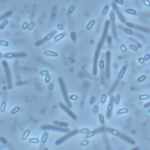Link to Pubmed [PMID] – 39657152
Link to HAL – pasteur-04832906
Link to DOI – 10.1093/jac/dkae427
Journal of Antimicrobial Chemotherapy, 6:dkae427. ⟨10.1093/jac/dkae427⟩
We read with great interest the article by Valdezate et al., which reports the first case of co-occurrence of the cepA and cfiA antimicrobial resistance genes in a Bacteroides fragilis isolate. The authors provide a detailed genomic characterization of the multidrug-resistant clinical isolate CNM20200260, assigned to B. fragilis Division II. This peculiar isolate, in addition to the cfiA carbapenemase gene associated with Division II, harbours the cepA cephalosporinase gene, which is primarily associated with Division I. B. fragilis isolates are clinically significant anaerobic bacteria commonly associated with bloodstream infections and intra-abdominal abscesses. They are divided into two partitions, commonly named Divisions I and II, based on their genetic and antimicrobial resistance profiles. Division I isolates typically harbour the cepA gene, encoding a cephalosporinase that confers resistance to cephalosporins; in contrast, Division II isolates possess the cfiA gene, which encodes a MBL responsible for resistance to carbapenems. The distinction between these two groups has important clinical implications, as it influences therapeutic options and the prediction of antimicrobial resistance mechanisms. A recent taxonomic revision has even reclassified B. fragilis Division II as a distinct species, named Bacteroides hominis. Given their distinct, so far non-overlapping distributions, cepA and cfiA genes are generally used as taxonomic markers of the Divisions I and II, respectively. Therefore, the description by Valdezate et al. of a Division II isolate harbouring the cepA gene complexifies the situation, especially since this observation has also been made in several isolates in another recent study.









